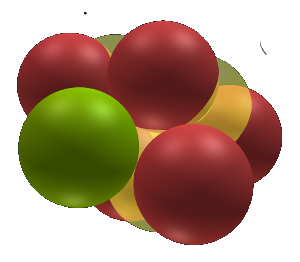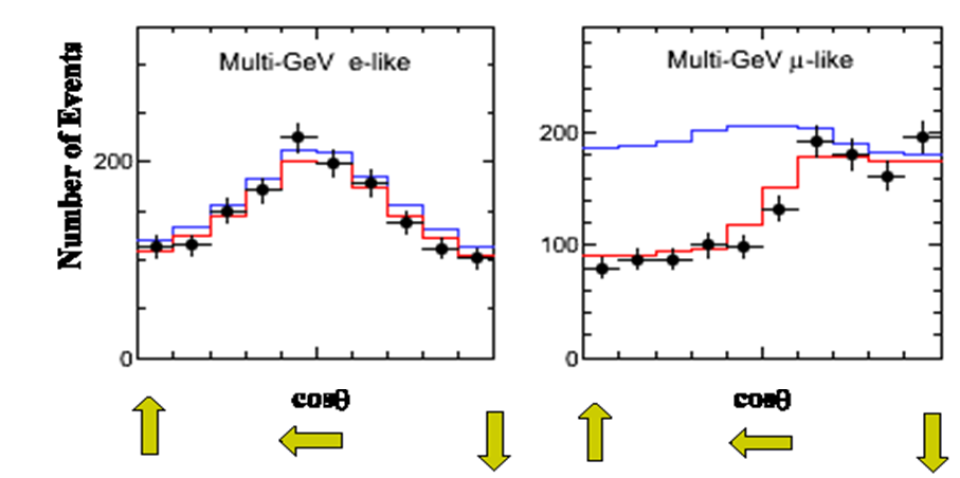On the ground surface, a huge amount of neutrinos are falling, as much as 66 billion / cm2 per second. Is there any role for a large amount of neutrinos to pass through matter? Super Kamiokande observes Cherenkov light emitted by neutrinos reacted to water, but only 8 can be observed a day. It's a furiously low response.
Neutrinos are considered to be pulses of the same electric field as light and radio waves. As with electromagnetic waves, protons and electrons propagate by regenerating pulses of the electric field. It seems that the neutrino seems to hardly react with other substances because the pulse of the electric field is the shortest and the regeneration efficiency is extremely good. Since neutrinos are pulses emitted when protons and electrons combine and discrete, they are considered to have frequencies resonant with protons and electrons.
By the way, neutrino oscillation was observed. Neutrino oscillation is thought to be due to the change to tauon neutrino from the fact that the muon neutrino out of the three types is less than the presumed amount.
The horizontal axis is the distance the neutrino passes through. The number of mu neutrinos on the right coming from the back of the earth is only about half of the expected value of the blue line. There is no change in left electronic neutrino. ( https://j-parc.jp/Neutrino/ja/intro-t2kexp.html )
The tauon neutrino, which is said to have changed, is not yet certainly observed. In other words, the neutrino oscillation can be regarded as decaying while muon neutrinos pass through thick rocks of the Earth. Also, in SEAM, neutrinos are electric pulses and do not have mass.
There is also a doubt what a large amount of neutrino is doing. The figure of 66 billion pieces per 1 cm2 is not so much compared with the number of atoms. If water has a specific gravity of 1, there are 3.3 × 10 ^ 21 molecules in 1 g. It is about 10 ^ 10 difference. However, considering the fact that neutrinos propagate through atoms, it is considered that neutrinos collide with almost all atoms.
The neutrino hits the nucleus and the electric field is regenerated. It seems that there is almost no loss in the regeneration of neutrinos, but not only the neutrinos but also various electromagnetic waves should be irradiated to the nucleus. In some cases the electric field regenerates with infrared rays like heat. The nucleus releases the excessive electric field applied and attempts to become stable. In gamma collapse, the excited state nucleus radiates gamma rays and settles in a stable state. It is assumed that a phenomenon similar to gamma collapse occurs in all nuclei.
So, I would like to make a fantastic outlook. The surplus electric field that accumulates due to the re-generation of the electric field creates a standing wave of gamma rays around the nucleus.
(http://www.quarkology.com/12-physics/98-quanta-quarks/98B-quantum-physi…)
The electron orbit keeps a certain distance from the nucleus. In SEAM, we have thought that electrons are loosely fixed on orbit by the electric attraction and repulsion by the protons and electrons of the nucleus. However, in addition to electric attraction and repulsion, the standing wave of the solar wind stabilized the orbit of the planet, as we thought about the revolution movement of the solar system. The same thing is done in the electron orbit of the atom.
Also, there is a possibility that the charge of electrons and protons is supplied by neutrinos. The magnetic field of the permanent magnet is maintained by absorbing ambient heat. I anticipate that electrons, protons are externally given an electric field and hold that charge.
(from wikipedia)
This prediction shows that extraordinary things will happen in outer space with less neutrinos and electromagnetic waves. In other words, when gamma ray standing waves that stabilize the electron orbit do not exist, atoms can not maintain the structure. The charge of protons and electrons weakens. For elements with large number of atoms, nuclei are exposed and collision begins. The nuclei break apart and return to a simple hydrogen atom, proton. In the universe where there are few stars that produce neutrinos such as void, elemental collapse is occurring.
- Log in to post comments

